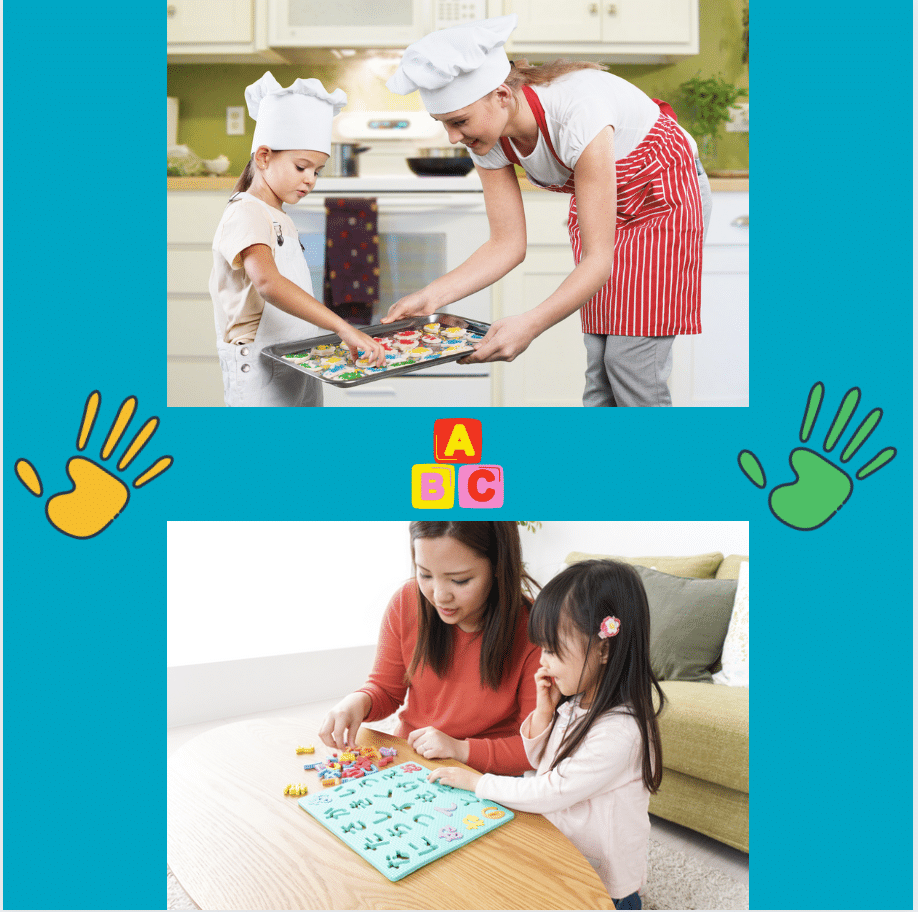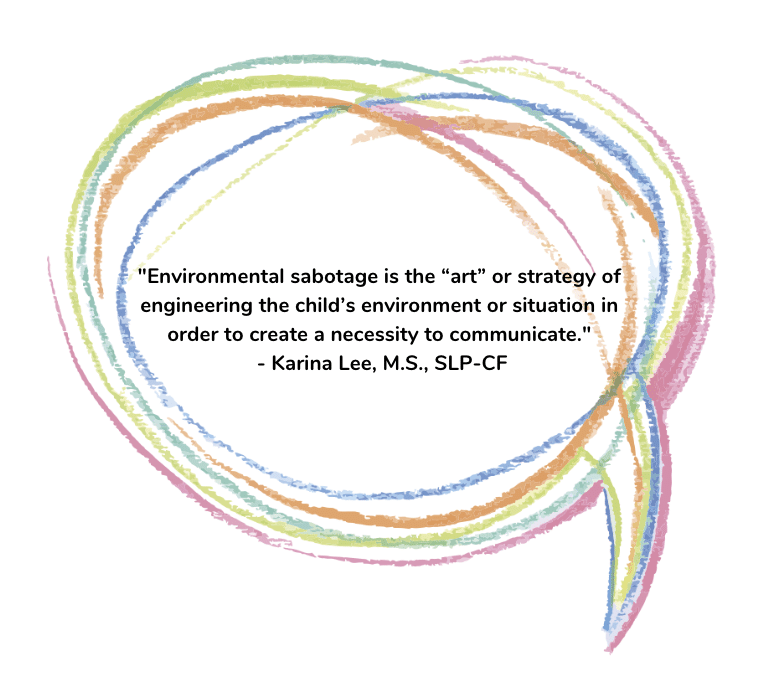What “Environmental Sabotage” is and how to make it work for you!
Written By: Karina Lee, M.S., SLP-CF, Edited by: Megan Sliski, PT, DPT

No one knows a child better than their parents/caregivers do. As parents, it’s your job to provide for your child’s needs and fulfill their wants to make your child happy. Before they even know what they want, you may make assumptions and offer what you think it is that they may want or need. However, as therapists, we use this feeling of wanting or needing something as a way to elicit and promote your child’s language development.
Environmental sabotage is the “art” or strategy of engineering the child’s environment or situation in order to create a necessity to communicate. If children are getting what they want without having to do any work to request it, why should the child bother communicating? Sabotage… out of love!

Let’s say your child goes to sleep every night and with his/her stuffed animal bunny. Before your child gets in bed where the bunny always is, you might “sabotage” your child’s environment by hiding the bunny. Your child will likely look around frantically and maybe cry or whine. Ideally, a little frustration will create the motivation for your child to look to you and request “help” or “bunny.” If your child still doesn’t make any effort to communicate after a few minutes, you can continue to act clueless and prompt your child to verbalize by asking “what’s wrong?” or “what do you need/want?” Eventually, you may “find” the bunny and hold it out of the child’s reach and tell the child to request “bunny.” Accepting verbal approximations, such as “buh buh”, may be okay. Your child still established the intent to communicate and used speech to make a request!

Creating these situations for your child to use effective communication is a good motivation to help them learn to use language. They learn that the best way to solve a problem is to use their words, not by crying or whining. Though we are creating a little frustration for the kids, we don’t want to cause them stress either.

Here are some important tips when creating an “environmental sabotage” situation:
- Give an ample amount of time for them to get creative with how they’re going to get their message across. They may struggle a bit but the idea is that if there is a necessity, they will try to find a way to let you know what they want or need.
- Make sure it’s the right level of difficulty. If your child has never said a word, you can’t expect them to say “I want the bunny please” after hiding their toy. Remember, communicative intent can be established without the use of speech. Simply making eye contact with you and pointing to the bed (to note something is missing) is sending a message to you too.
- Don’t be afraid to get silly! If they point to the cookie, give them the piece of paper next to the cookie. If they want their favorite book read, start it on a different page. These little absurdities will have your kids questioning (and then communicating!) what’s going on.
Sabotage… out of love!



0 Comments